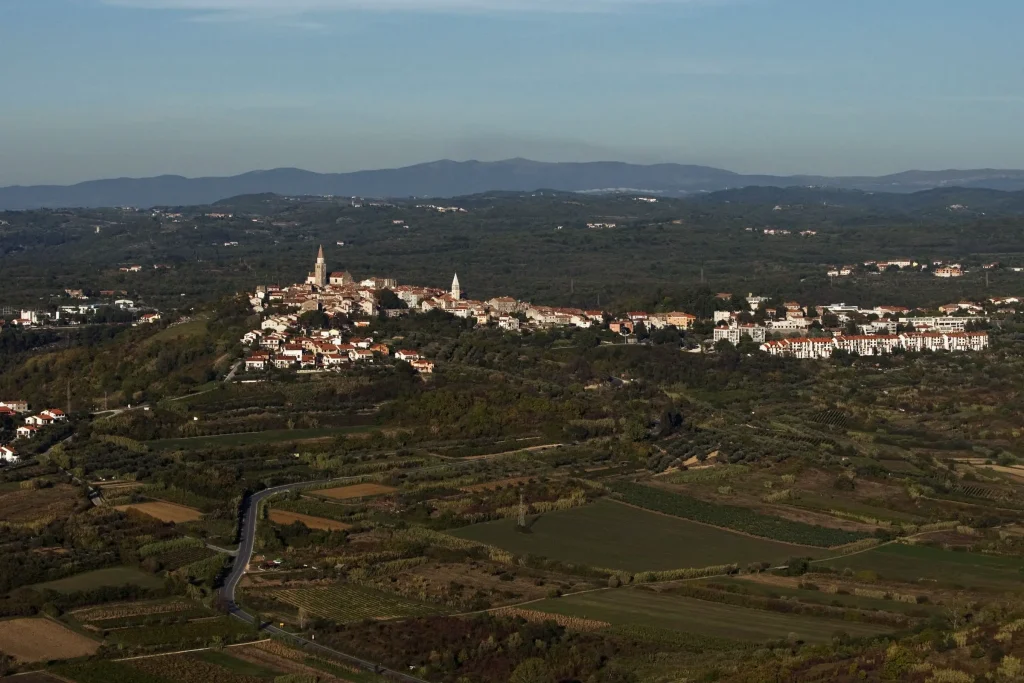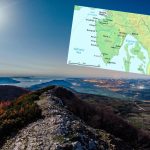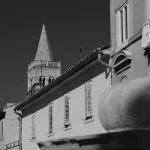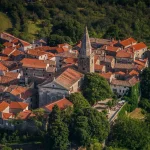We’ve explored many of the dialects, subdialects and indeed languages in their own right as some linguists consider them to be which are spoken across modern Croatia. From the Dubrovnik subdialect (Ragusan) in the extreme south of Dalmatia to Northwestern Kajkavian in areas like Zagorje, the ways in which people speak in this country deviate from what we know as standard Croatian language enormously. That goes without even mentioning much about old Dalmatian, Zaratin, once widely spoken in and around Zadar, Istriot, or Istro-Venetian.
Istria is known even today for being part of Croatia that has seen enormous change, and many different groups and ethnicities pass through and live on the peninsula. It’s far from just the influence of Italian and the former Venetian Empire which reigns strong in this region of Croatia. For a quick linguistic example, in Istria alone, we have Istriot, Istro-Venetian, Istro-Romanian, and the extinct Istrian-Albanian. That’s far from all. In this article, we’ll delve a little deeper into the southwestern Istrian dialect, which is part of the much wider category of Chakavian.
A brief history of the southwestern Istrian dialect
As stated above, the southwestern Istrian dialect belongs to the group of dialects called Chakavian and contains both Chakavian and Shtokavian features. Despite this, it is generally considered to be the most widespread Chakavian dialect in all of Istria, originating not from any Italian influence, but from the dialects spoken much further south, down in the Dalmatian-Herzegovian region. If you want to get a little more complicated, this dialect is part of the Chakavian-Shtokavian/Shtokavian-Chakavian/Stakavian-Chakavian Ikavian dialect(s). A mouthful, I know, but much like with most other dialects and subdialects, linguists have butted heads in the past when it comes to proper classification.
Because of this mix of both Shtokavian and Chakavian features, most experts believe that the origins of the southwestern Istrian dialect can be traced back to what most other dialects spoken across Istria resulted from – migration. The aforementioned Dalmatian-Herzegovian influence likely draws its origins from the arrival of Dalmatian settlers from the wider Makarska area (Central Dalmatia) in Istria back during the sixteenth century.
These people primarily spoke in a Shtokavian-Ikavian dialect which still had its own Chakavian features. When more Dalmatian settlers arrived on the peninsula from a little further north in Dalmatia, more specifically from the wider Zadar and Sibenik areas, the elements of Chakavian were even further enhanced.
Why did Dalmatian settlers move to Istria?
If you’re anything even close to a history buff, you’ll probably have guessed the reason for this migration – the Ottomans. The Ottoman Empire and its marauding Turks were the reason for mass migration of many different ethnicities during this period of history and indeed beyond it. It wasn’t just that empire that mixed things up, however, with the then extremely powerful Venice also moving different ethnicities to Istria as the decades passed owing to Istria’s dwindling native population. This is the primary reason for the emergence of the now extinct Istrian-Albanian language, for example, as ethnic Albanians also settled there.
As time rolled on, different ways of speaking emerged, and people who primarily spoke Novoshtokavian dialects arrived in Istria, having themselves come from the wider Sibenik and Zadar regions. This gave rise to the southwestern Istrian dialect as it is known and accepted today, and it is considered by many in the field of linguistics to be a post-migration dialect. The overall result of this turbulent period in history is that today, in that dialect, Chakavian features mostly prevail everywhere except in the area of the extreme south of Istria, all the way down to Premantura and its immediate surroundings.
Where can I hear the southwestern Istrian dialect spoken today?
In modern times, the southwestern Istrian dialect is spoken upwards from the extreme south of the region, along the west coast of the Istrian peninsula all the way to the mouth of the Mirna river.
Heading east, the dialect encompasses the areas of Kringa, Muntrilj, Kanfanar, Sv. Petar u Sumi and Sv. Ivan, along the west bank of the Rasa river to Barban (not to be confused with Barbana in Italy!), then it encompasses the areas of Rakalj, Marcana, Muntic, Valtura, Liznjan, Sisan, Medulin and the southern part of Jadreski. The southwestern Istrian dialect can also be heard in several other small villages and hamlets.
For more on the Croatian language, including the histories of various dialects, subdialects and extinct languages, as well as learning how to swear in Croatian, make sure to keep up with our lifestyle section. An article on language is published every Monday.











